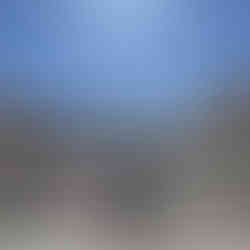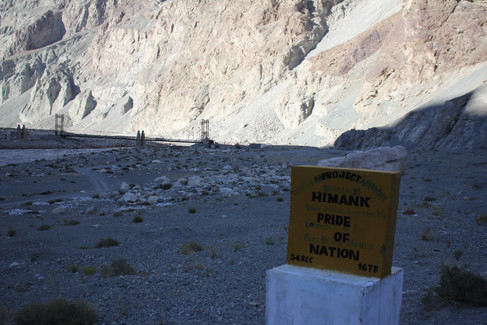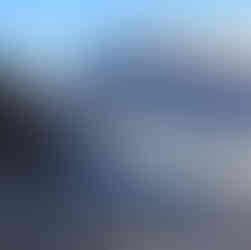At India's Frontier - Stand-Up Paddle Boarding at River Shyok, Ladakh
- Kumaran Geopaddler

- Sep 16
- 7 min read
It was mid-September of 2016, and I had just completed the World’s Highest Stand Up Paddle Boarding Attempt at Lake Tsoltak a few days before. The next step was to go to River Shyok via Khardung La Pass, and then to Turtuk, India's last village.

The Shyok River is the major tributary of River Indus, the river from which the name of our country is derived. Originating in the Karakoram Range in Ladakh, it flows south-Eastward towards the Pangong Range, reverses its course at Galwan, and flows North-Westward towards Diskit, meets the Nubra river there, and then to Pakistan. A tributary of Shyok flows into China as well, making it a tri-nation river. The river’s unusual course has to do with the unusual geography of the region, the Himalayan range is a study for the lifetime. River Shyok is known as both “gravel spreader”, which makes sense in a practical way, and “River of Death”, which also makes sense, given its extremely dangerous course.


After paddling at Lake Tsoltak, we came to Leh. It is such a beautiful place, which is constantly in the line of fire. Historically, it was the epicenter of trade, as early as 1 AD to 3 AD. As a geologist, I couldn’t care less about manmade boundaries even though I recognize the geopolitical importance of them, as boundaries are meant to change. So I definitely cannot feel any different than I felt before when I cross an imaginary line, right? Wrong. Despite knowing that the boundaries are hand-drawn by someone who was in a hurry to leave the country leaving a huge mess in their wake, I did have a surreal feeling that this was my country, for which my people have laid down their lives defending her. Life cannot always be experienced through a rational lens, so I feel the emotions as they come.
At Leh we saw the military organized into various camps based on their regiment. If I called myself an adventurer, the soldiers out there are adventurer pro max. We stayed for a couple of days at Leh, visiting different military camps, the Leh Palace, the geology museum, and other places. The people were predominantly Buddhist with a high influence of Tibetian culture. The Tibetan plateau has four regions, three in China and one in India. The Ngari Khorsum covered the Ladakh region. The administration of this region has had a strong presence since the 1st century, and thus close cultural links with Ladakh, Kinnaur, and Spiti.
We ascended the Khardungla pass. This pass connects the Shyok valley and the indus Valley, and then leads up to the Nubra Valley. On the way, we could see the remnants of Indian Army tanks and vehicles stuck under avalanches and cannot be rescued lest risk another avalanche. It was amazing how the army got there in the first place. I salute the BRO, Border Road Organization, for maintaining the roads, quite literally paving the way for the military to safeguarding the nation by providing the connectivity lifeline.

Apart from handling friendly, not-so-friendly, and outright hostile neighbours, the Indian Army in the Himalayas face another challenge – Geography. China sits on a plateau, at a greater elevation, so they can comfortable sit on our heads, but we have to cross the mighty Himalayas over 5000 meters tall to bring our inventory to the base. Not to mention heavy snowfall and extreme weather conditions completely cutting them off from mainland for over 4 to 5 months every year – necessity and challenges made us logistically stronger.
At Khardung La pass, we could see runners running the Khardung La challenge of the Ladakh Marathon, the highest marathon in the world. This run was established to create awareness about the regions affected by hostile weather conditions, and it attracts runners from all over the world. The ecotourism at Ladakh could not be expanded any further due to security reasons. I noticed that there were many people from Tamil Nadu there, and as we were from there too, the local people had quite some respect for us. I got to know that the respect was because the nature of most Tamil people – friendly but not loud – was quite similar to that of the Ladakhi people.
As we descended from Khardung La, we all felt the symptoms of AMS. Winter was coming, and yes, it is indeed ominous as it sounds there. The air was thin, and the effect of the UV rays were high, thus we tanned quite a lot. As we descended, I saw a rafting company “Shyok River Rafting”. However, it does not exist now, which is not surprising – the very Nature that is extremely heaven-like is the one that drags you to the depths of hell with its extreme fluctuations.

We came to Hunder, the large flood plain created by River Shyok and as we took a right turn, we saw the Shyok River flowing from East to West. Almost immediately, it widens massively and opens up in the valley. There were many mountain passes here and there. As we turned left, we could see the path leading to Siachen, the world’s largest battlefield. We could not go there as we needed special permissions to even enter that path. The valley where River Shyok meets River Nubra is the Nubra valley. The confluence was bordered by huge sand dunes. The waters hadn’t frozen over, and thus most of the area was barren with lots of sand, with pockets of scree here and there. Nubra Valley is truly in a league of its own. It touches one's soul and makes one feel emotions like nothing has ever before. For me, it was as if I entered another universe; the emotions I felt were inexplicable.

We halted at Diskit for the night. The place was exactly like the idea of Kashmir we would have as a child – snow, mountains, and apples. The hospitality in the cottage was amazing; we had piping hot parathas with so much butter and cheese. At Diskit, there is a wetland, which is an agricultural patch where in vegetation grows. This was a tourist area with many home stays and attractions. We saw the native double-hump Bactrian camel.

The next day, left Diskit and continued on our path to go to Turtuk, India’s last village between India and Pakistan. On the way, we saw the world’s highest runway, and Indian army’s airlifter – the Boeing C-17 Globemaster III. We were lucky to see it; it was massive. The airfield too had thousands of fuel containers. Civilian photography was prohibited there. There, we also saw the world’s highest dosa shop. It is run by the 162 Medium Regiment of the Indian Army, and I was happy to see the sign of their war cry “Veeravel Vetrivel” in Tamil. Making a dosa at such an altitude is very difficult, as fermentation would take forever due to the extreme cold. It definitely did not taste the way it would at home, but the euphoria of having a food that originated at the sea level, at the highest elevation imaginable, was a different feeling. We reached Turtuk and rested there for the night.

Turtuk, was beautiful. It gave a Mediterranean feel despite being in the Himalayas. Since it lies close to the Line of Control between India and Pakistan, it was a major player in the Kargil war of 1999. We saw soldiers guarding the Operation Vijay memorial honouring the bravehearts who lay down their lives for our nation. It was a deeply emotional moment to set foot on the same land as they did.
The people of Turtuk there were extremely beautiful, smiling as they went by their day on horseback. We met the descendent of the King of the Leh, who now was the administratior of the Balti Heritage House and Museum. I engrossed myself into the fascinating world of history the museum showed me. We drank the waters of the beautiful freshwater stream at Turtuk and trekked up the mountains. The three days that passed by were beautiful, filled with awe-inspiring events.
The plan was to get back to Leh and return home from there. Enroute Leh, ascending Khardung la, we crossed River Shyok and saw the rafting company once again. This time, I sprang into action. The guides of the rafting company provided water support and wet suit, and I got ready to launch my SUP board. As the river changes course, we walked for a while before launching into the ice-cold waters. I was instructed that I might not be able to paddle for long, as the river would widen and become dangerous.
I knelt down and paddled initially before standing up; much to the entertainment and astonishment of the people who were travelling by road. I was freezing on the outside but my adrenaline was at its peak on the inside. I encountered Grade 2 rapids, but fortunately as I had kayak support, a single-seat river kayaker who was with me the whole time, I did not fall. Once I picked up momentum, the cold didn’t really register, I kept paddling and it was ethereal.
I suddenly heard a huge rumble, that of a heavy waterfall up close. I looked up to see a bridge, with military personnel flagging us to stop and turn back. We sensed something downstream, and pulled out well ahead of them. As expected, it was a massive rapid, as massive as a waterfall. It made a huge churning movement before falling into a plunge pool. The military personnel told me that if I had gone any further, even scavengers couldn’t have discovered my body. It was cut-off for a good measure, as even though the river became flat after the rapid, there was no rescue support beyond that point. I was glad I trusted my instincts, and that there were people watching my back. It is history now, as no one has ever paddled there before, and no one will ever again until international tensions ease and the borders open up.
Stand-Up Paddle boarding is quite a calm activity compared to many others that give an adrenaline surge. I had completed the world record for Stand-Up Paddling at the highest altitude just a few days back, but somehow paddling at River Shyok was more thrilling, adventurous, and even more dangerous. However, like most other things, the record at Lake Tsoltak took the spotlight. Not to take away anything from it, but today, as I look back at that trip, I think of the vivid geography and the near-miss experiences of River Shyok and Nubra valley more than that of Lake Tsoltak.
After paddling at River Shyok, we came to Leh. We visited the Leh Palace, once again I got the chance to immerse myself in history. The palace looked heavenly in the golden hour. With a warm ending to the experiences in the freezing cold, we returned home.




























































































Comments